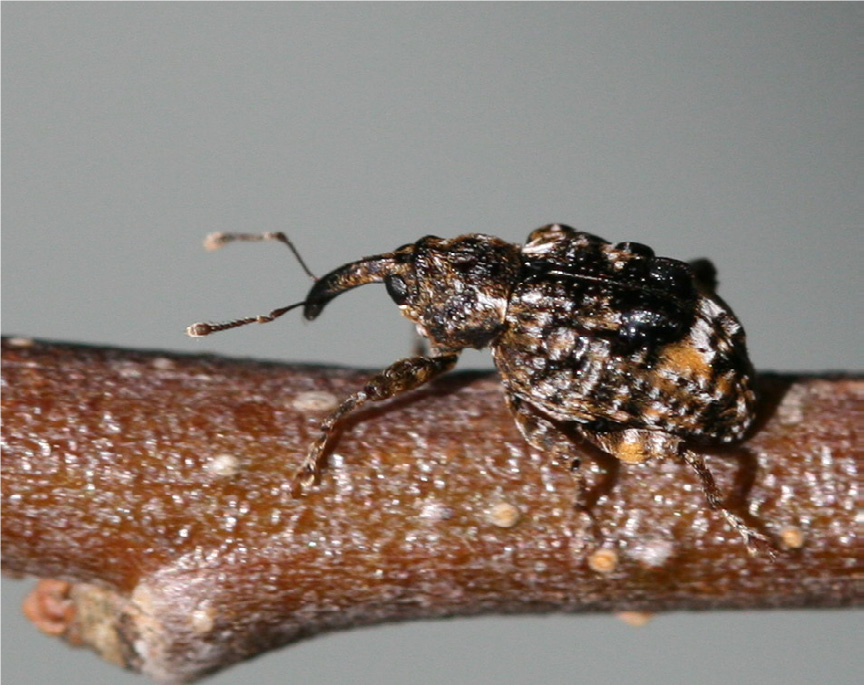The plum curculio (Conotrachelus nenuphar) is the most serious insect pest of apples and among the most destructive insect pests of peaches. It also attacks plums, pears, and apricots. It is found in most states east of the Rocky Mountains.

Description
The adult plum curculio is a 3/16" dark brown beetle with a snout about 1/3 as long as its body. Its wing covers have four bumps and grayish-white patches. The immature (larva) is a grayish-white, legless, c-shaped grub with a small brown head, and is 1/3" long when fully grown. The grub can be found inside infested fruits during June and early July.
Life Cycle
Adult plum curculios primarily overwinter in forest leaf litter. In spring, adults become active and feed upon a developing fruit. During this time, they mate and begin laying eggs. Females make small holes in the skin of the fruit, into which they deposit an egg. These holes protect the eggs as the fruit develops and expands. One female lays an average of 150 to 200 eggs.
The eggs hatch in 2-12 days and the grubs immediately begin to feed in the fruit. Most grubs work their way into the center of the fruit. Infested apples usually fall to the ground about the same time as the June drop. If the apples do not fall to the ground, the eggs probably did not hatch or the grubs did not develop. However, the egg scars will be present at harvest and will degrade the quality of the fruit. The larval stage usually takes 2-3 weeks.
When full-grown, the grubs work their way out of the fruit and move into the ground to pupate. Adults emerge about one month later (usually in August) and spend a few days feeding on a fruit. They seek winter shelter in late August-early September. The entire life cycle from egg to adult takes approximately 57 days.


curculio egg (bottom). Credit: Alan Eaton.
Management
IPM Strategies:
- Monitoring - The critical areas (outer rows) of an orchard should be monitored regularly for fresh feeding or egg laying punctures. The most important period to monitor is between bloom and about two weeks following petal fall. Attacks on apple begin when the fruit reaches 6mm (1/4 inch) size.
- Biological and Non-Chemical Control - We are studying methods to concentrate curculio attacks with pheromones and fruit odors, to reduce dependence on spraying. Organic growers can control this insect with multiple applications of a certain kaolin clay product.
- Chemical Control - Usually two or three sprays are directed at the plum curculio:

Consult the current New England Tree Fruit Management Guide and your county Agricultural Field Specialist for more details on management strategies and for the latest pesticide recommendations.
Stop! Read the label on every pesticide container each time before using the material. Pesticides must be applied only as directed on the label to be in compliance with the law. All pesticides listed in this publication are contingent upon continued registration. Contact the Division of Pesticide Control at (603) 271-3550 to check registration status. Dispose of empty containers safely, according to New Hampshire regulations.
Download the resource for the complete factsheet.
